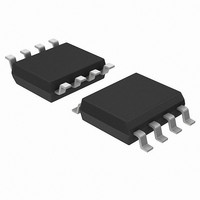NCP1252ADR2G ON Semiconductor, NCP1252ADR2G Datasheet - Page 10

NCP1252ADR2G
Manufacturer Part Number
NCP1252ADR2G
Description
IC PWM CTLR CURRENT MODE 8-SOIC
Manufacturer
ON Semiconductor
Datasheet
1.NCP1252ADR2G.pdf
(17 pages)
Specifications of NCP1252ADR2G
Frequency - Max
500kHz
Pwm Type
Current Mode
Number Of Outputs
1
Duty Cycle
50%
Voltage - Supply
9 V ~ 28 V
Buck
No
Boost
No
Flyback
Yes
Inverting
No
Doubler
No
Divider
No
Cuk
No
Isolated
Yes
Operating Temperature
-25°C ~ 125°C
Package / Case
8-SOIC (0.154", 3.90mm Width)
Duty Cycle (max)
48 %
Mounting Style
SMD/SMT
Switching Frequency
92 KHz to 550 KHz
Maximum Operating Temperature
+ 125 C
Fall Time
22 ns
Rise Time
26 ns
Synchronous Pin
No
Topology
Flyback, Forward
Lead Free Status / RoHS Status
Lead free / RoHS Compliant
Available stocks
Company
Part Number
Manufacturer
Quantity
Price
Company:
Part Number:
NCP1252ADR2G
Manufacturer:
TI
Quantity:
8 672
Part Number:
NCP1252ADR2G
Manufacturer:
ON/安森美
Quantity:
20 000
Introduction
controller specifically developed to drive power supplies
designed for the ATX and the adapter market:
•
•
•
•
•
•
•
•
The NCP1252 hosts a high−performance current−mode
Current Mode operation: implementing peak
current−mode control topology, the circuit offers
UC384X−like features to build rugged power supplies.
Adjustable switching frequency: a resistor to ground
precisely sets the switching frequency between 50 kHz
and a maximum of 500 kHz. There is no
synchronization capability.
Internal frequency jittering: Frequency jittering
softens the EMI signature by spreading out peak energy
within a band ±5% from the center frequency.
Wide Vcc excursion: the controller allows operation
up to 28 V continuously and accepts transient voltage
up to 30 V during 10 ms with I
Gate drive clamping: a lot of power MOSFETs do not
allow their driving voltage to exceed 20 V. The
controller includes a low−loss clamping voltage which
prevents the gate from going beyond 15 V typical.
Low startup−current: reaching a low no−load standby
power represents a difficult exercise when the
controller requires an external, lossy, resistor connected
to the bulk capacitor. The start−up current is guaranteed
to be less than 100 mA maximum, helping the designer
to reach a low standby power level.
Short−circuit protection: by monitoring the CS pin
voltage when it exceeds 1 V (maximum peak current),
the controller detects a fault and starts an internal
digital timer. On the condition that the digital timer
elapses, the controller will permanently latch−off. This
allows accurate overload or short−circuit detection
which is not dependant on the auxiliary winding. Reset
occurs when: a) a BO reset is sensed, b) V
down to V
disappear before the fault timer ends, the fault timer is
reset only if the CS pin voltage level is below 1 V at
least during 3 switching frequency periods. This delay
before resetting the fault timer prevents any false or
missing fault or over load detection.
Adjustable soft−start: the soft−start is activated upon
a start−up sequence (V
CC(min)
level. If the short circuit or the fault
CC
going−up and crossing
VCC
< 20 mA
CC
Application Information
is cycled
http://onsemi.com
10
•
•
•
•
V
(SS
without in that case timer delay. This internal time
delay gives extra time to the PFC to be sure that the
output PFC voltage is in regulation. The soft start pin is
grounded until the internal delay is ended.
Shutdown: if an external transistor brings the BO pin
down, the controller is shut down, but all internal
biasing circuits are alive. When the pin is released, a
new soft−start sequence takes place.
Brown−Out protection: BO pin permanently monitors
a fraction of the input voltage. When this image is
below the V
not switch. As soon the voltage image comes back
within safe limits, the pulses are re−started via a
start−up sequence including soft−start. The hysteresis is
implemented via a current source connected to the BO
pin; this current source sinks a current (I
pin to the ground. As the current source status depends
on the brown−out comparator, it can easily be used for
hysteresis purposes. A transistor pulling down the BO
pin to ground will shut−off the controller. Upon release,
a new soft−start sequence takes place.
Internal ramp compensation: a simple resistor
connected from the CS pin to the sense resistor allows
the designer to inject ramp compensation inside his
design.
Skip cycle feature: When the power supply loads are
decreasing to a low level, the duty cycle also decreases
to the minimum value the controller can offer. If the
output loads disappear, the converter runs at the
minimum duty cycle fixed by the propagation delay and
driving blocks. It often delivers too much energy to the
secondary side and it trips the voltage supervisor. To
avoid this problem, the FB is allowed to impose the min
t
V
ensure no−load outputs conditions as requested by
recently updated ATX specifications. Please note that
the converter first goes to min t
duty cycle: normal operation is thus not disturbed. The
following figure illustrates the different mode of
operation versus the FB pin level.
ON
CC(on)
skip
delay
down to ~ V
, zero duty cycle is imposed. This mode helps to
) after a minimum internal time delay of 120 ms
). But also when the brown−out pin is reset
BO
threshold, the circuit stays off and does
f
and it further decreases down to
ON
before going to zero
BO
) from the











